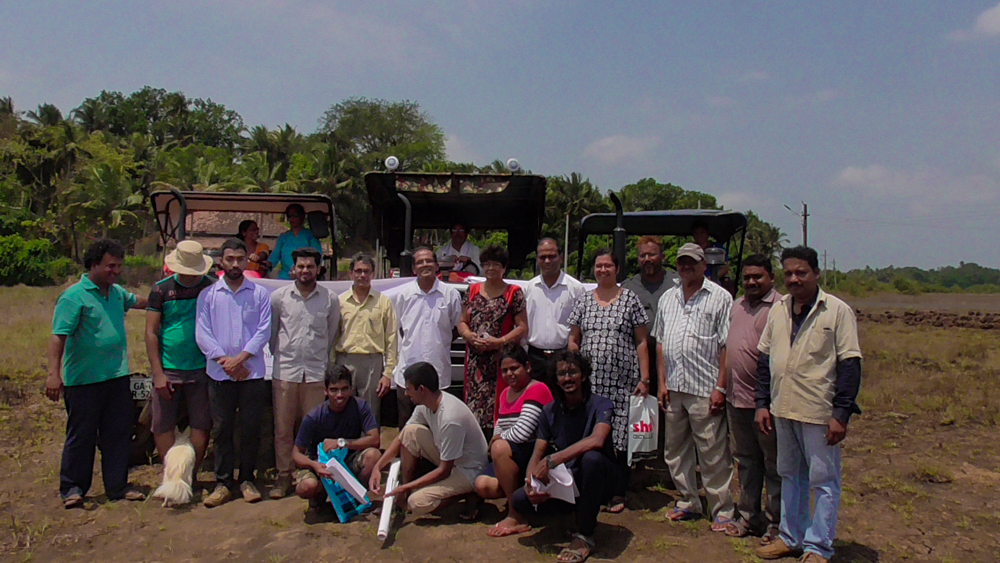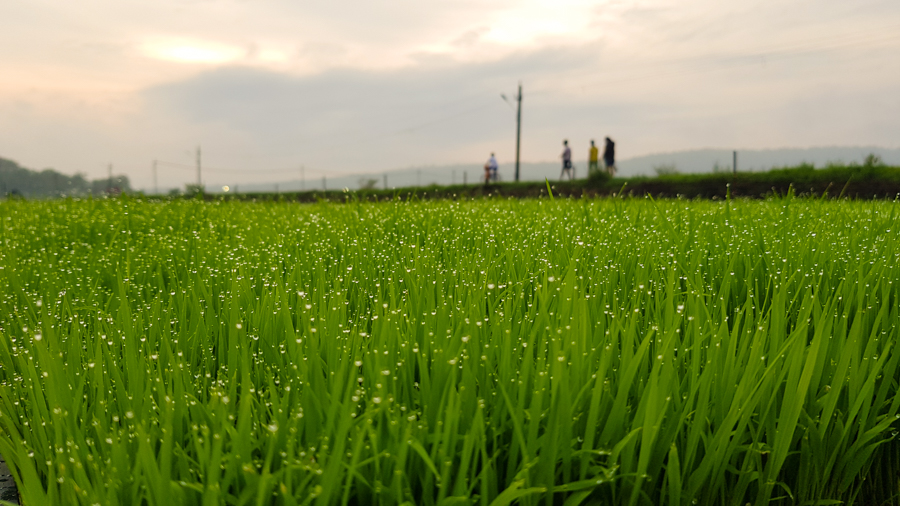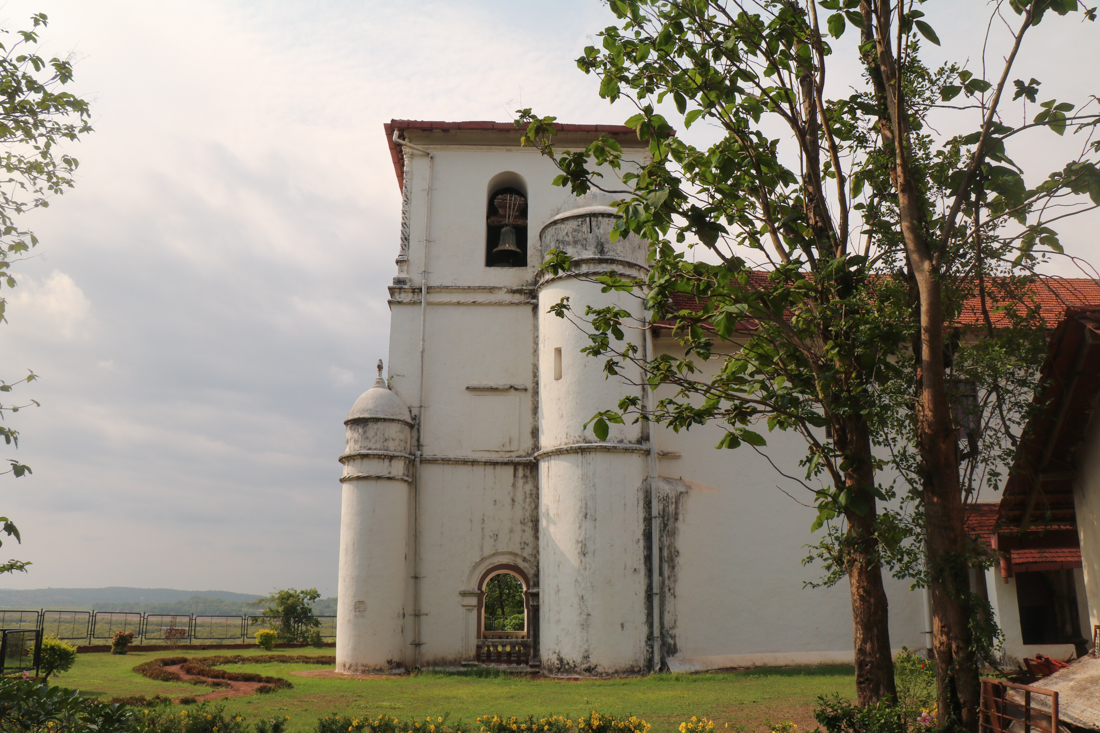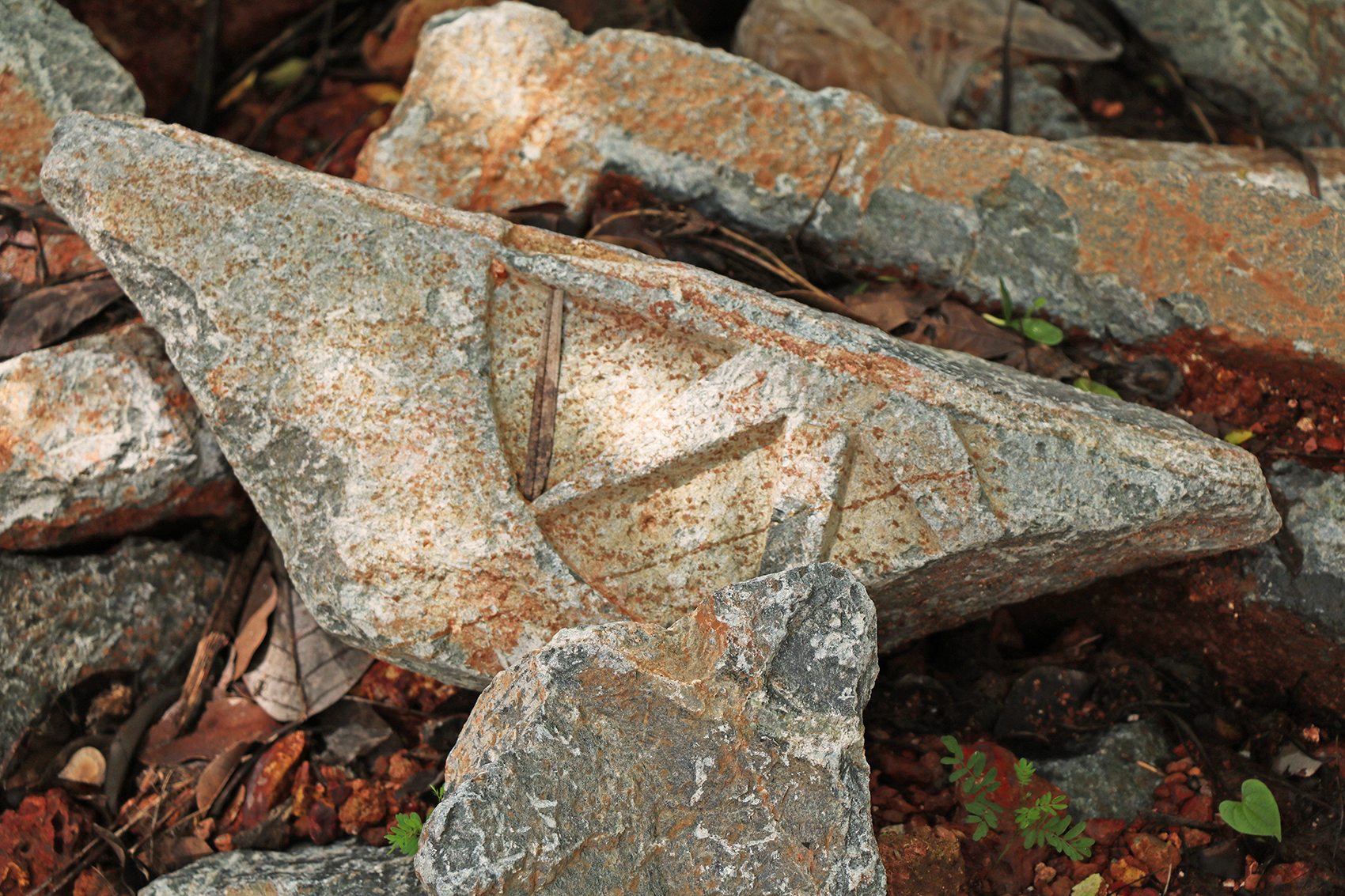Lately there seems to be a certain buzz around Ilhe de Jua, St. Estevam. The fields that were once central to the identity of this Goan village have been taken up for farming after a gap of 2 long decades. ‘These lands were all uncultivated and lying bare for almost the past 30 years’ remarks a resident of the island. St Estevam is now turning a corner as villagers have united in a bid to practice community farming with the introduction of modern technology and with the help and support of many other agencies and well-wishers.
Jua, or St. Estevam is an agglomeration of islands which lie in Tiswadi, separated from the it’s mainlands of Narve and Marcel by the Mandovi River and the Cumbarjua Canal respectively. The ancient inhabitants of Jua were experts at constructing bunds and seemed to have mastered the practise of building sluice gates (manos) to control the tidal flow. Over the centuries, they have painstakingly reclaimed their khazan lands with locally available materials, in a system unique to Goa.
Its fertile alluvial soil meant that farming has always been the traditional occupation of the villagers, earning it fame for the wide assortment of vegetables grown and exported through the centuries, especially it’s Ladyfinger. It was thus known as ‘Shakechem Zuvem’ or, ‘Isle of Vegetables’ and the people too were nicknamed ‘Bhendekars’. It was perhaps the greenest of all the islands as the Portuguese referred to it as ‘Ilha Verde’ or ‘Green Island’.
In recent decades however, farming had died out. A shift in the interests of preceding generations and the lack of skilled manual labour being some of the major reasons for this decline. All lands, barring a handful, were left barren and unkempt. These fallow khazan lands are now all set to be re-vitalized in an amazing new chapter in the islands history.
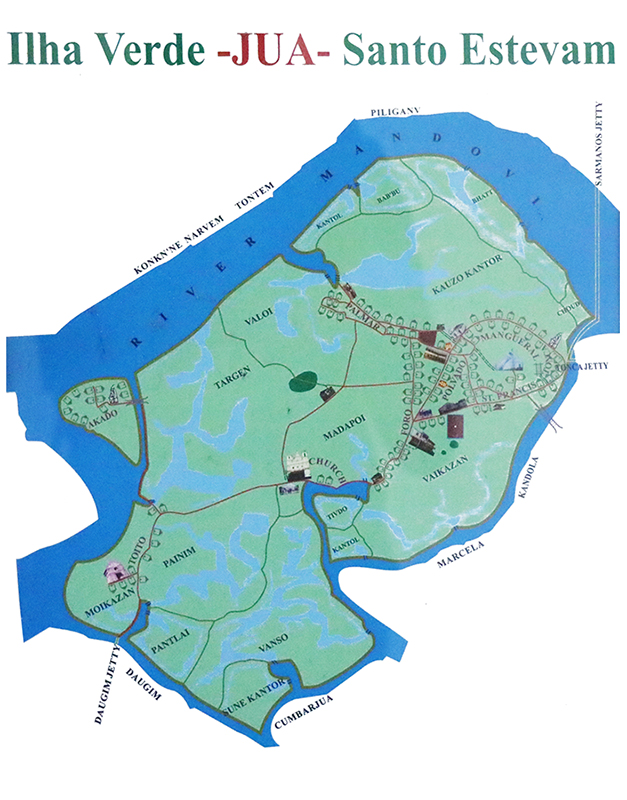
The story
It all started with a few passionate residents, led by Shailendra Afonso, more famously known as ‘Dudush’, who conceived the idea of cultivating all their fallow lands. Together with Nestor Rangel, a farmer hailing from St. Estevam, they discussed at length the feasibility of the project, considering that farming 1 acre of land (~4000sq.m) would cost in the region of Rs.45,000 including all materials and ploughing, de-weeding and harvesting with manual labour. This figure was too high and their plans were initially met with some skepticism. However, they still persisted. To atleast start materializing their vision, Dudush and his friends took up the tedious task of surveying their khazan lands, which is in the region of 10lakh sq.m. They obtained a big village map from the Church, and downloaded further information from various other sources, all at their own cost. Booklets for each khazan were made with information like sub-plot numbers and extents. This group of people later formed the Ilha Verde Farmer’s Club.
The individuals of the club, with help from volunteers, went to each house sector-wise to personally verify their cultivatable lands, and to enquire their stance on their participation in the project. This turned out to be a very laborious process as people were unable to recollect the extents of their land. They spoke of the days of yore recounting how their grandparents toiled in the fields, but were not able to remember their areas. However, people slowly started coming out with their papers and the movement was taking some shape. There was still a major stumbling block though – the feasibility.
The role of the Salesian Priests
Step in Fr. George Quadros, Salesian of Don Bosco. The leading farmers of the Farmer’s Club, Nestor Rangel, was well aware of the modern farming practised by him in Goa. He approached him to provide his services of mechanised farming at Jua. Fr. George held discussions with the Club, and gave them a figure of Rs.3 per sq.m, a value which rose to Rs. 3.5 considering the de-weeding and harvesting as well, which works out to be more than reasonable.
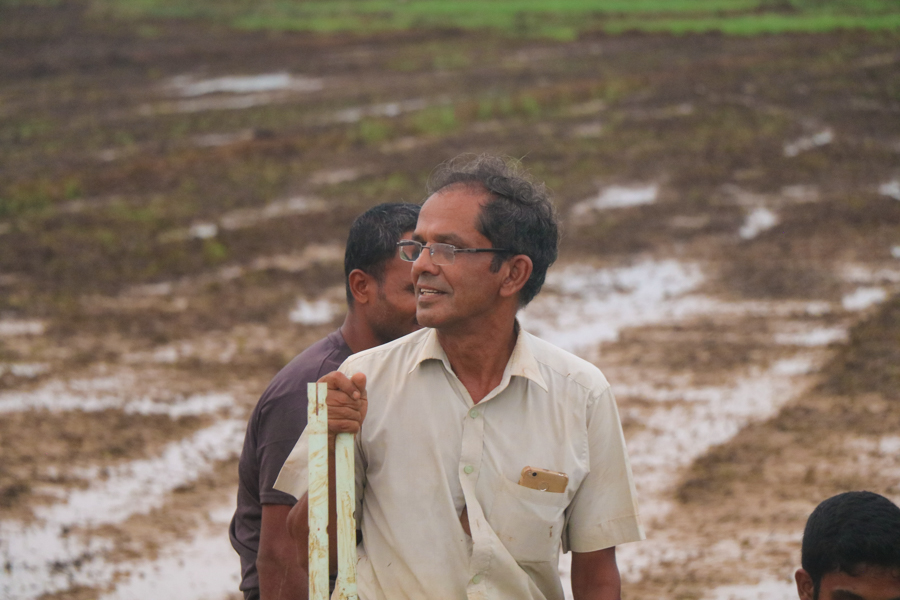
The works at St. Estevam is part of a larger regeneration of fallow lands happening across Goa. And at the forefront of them all is one figure – Reverend Father George Quadros, project head at the Don Bosco Loutulim Soceity (DBLS) and his team. The energetic priest has been revolutionizing farming methods in Goa, bringing in foreign technology to aid farmers in Goa. He has immense experience having implemented similar large scale farming in villages like Majorda, Saligao and Cavelossim.
The process of bringing in the people began early in the year as Fr. Eusico Perreira, the parish priest of St Estevam Church, made weekly announcements about the initiative of community farming. It was explained that the people would come together and practise community farming, and they would have to pay a certain rate to the agencies supplying the materials and technology. They could then avail their crops, or leave it to the Farmer’s Club for selling.
A great number of people expressed their support and collaboration in the programme. Few have even taken a step ahead and made financial contributions. The documentation of each one’s individual plots seems like a never-ending process though, and many parts of land still remain largely unidentified, but to prevent further delay, the club has taken a descision to atleast start with the Madapoi, Valoi and Targem Khazans.
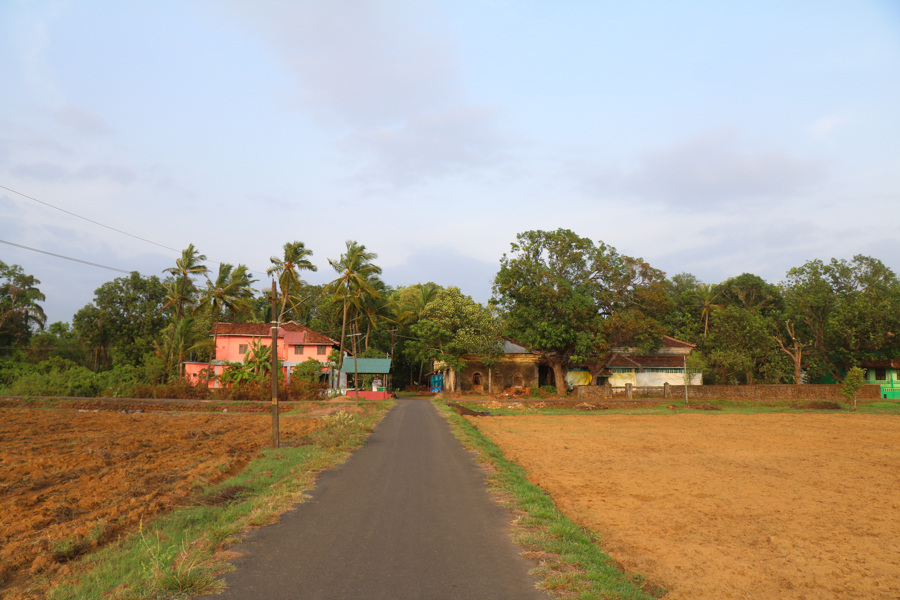
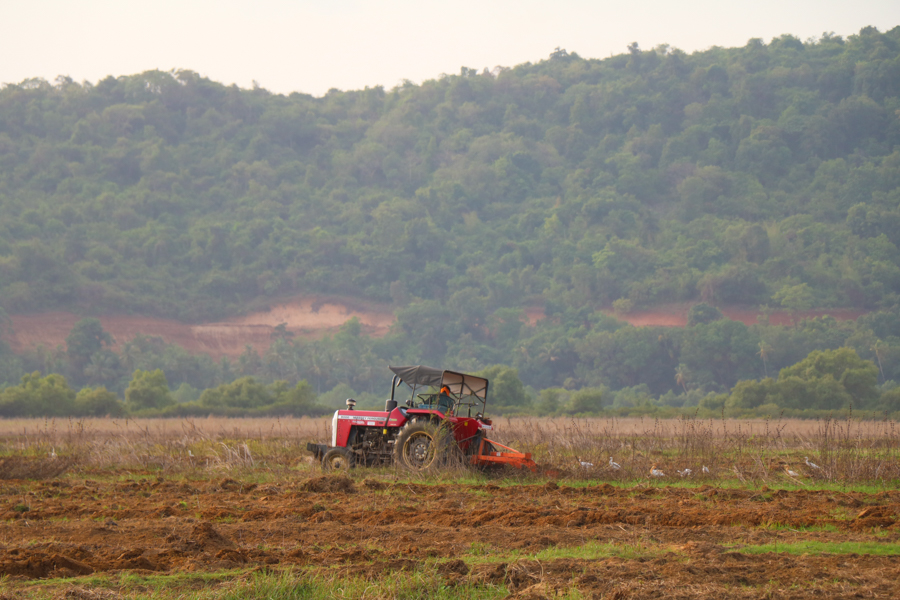
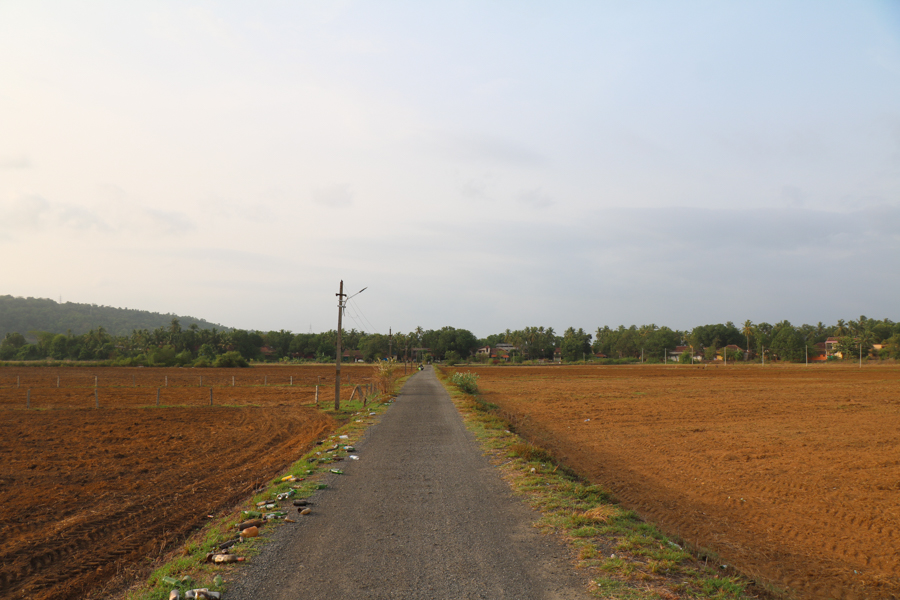
‘The surveying part took so long that it threatened to postpone the project. But with the goodwill of Fr. George who was patient, by the time we finished the paperwork in May, he started ploughing of the fields immediately’ says Dudush, one of the leading members of the Club.
Work started in May when the fields were ploughed with the help of tractors. ‘We faced a bit of a problem in the beginning as the soil was very hard. But it suddenly rained one day, and after a gap of two days there were showers again. This made our work a lot easier!’ says Ansyl Gonsalves, one of the dedicated Parish Youth volunteers who has a full time job, but still makes sure he takes part in the farming work.
In the last week of May, a small nursery was set up in the Madapoi Khazan, where different types of rice were grown, like the Goa Dhan and Khormut. The seeds are planted in a space-effective manner in trays which are then laid in the ground. The first ever batch to be planted surprised everyone. While it was expected to take 4 days to shoot up, it grew in just roughly 3 days! The signs are all promising. New seeds were laid to sow every day and the first batch has already been transplanted.
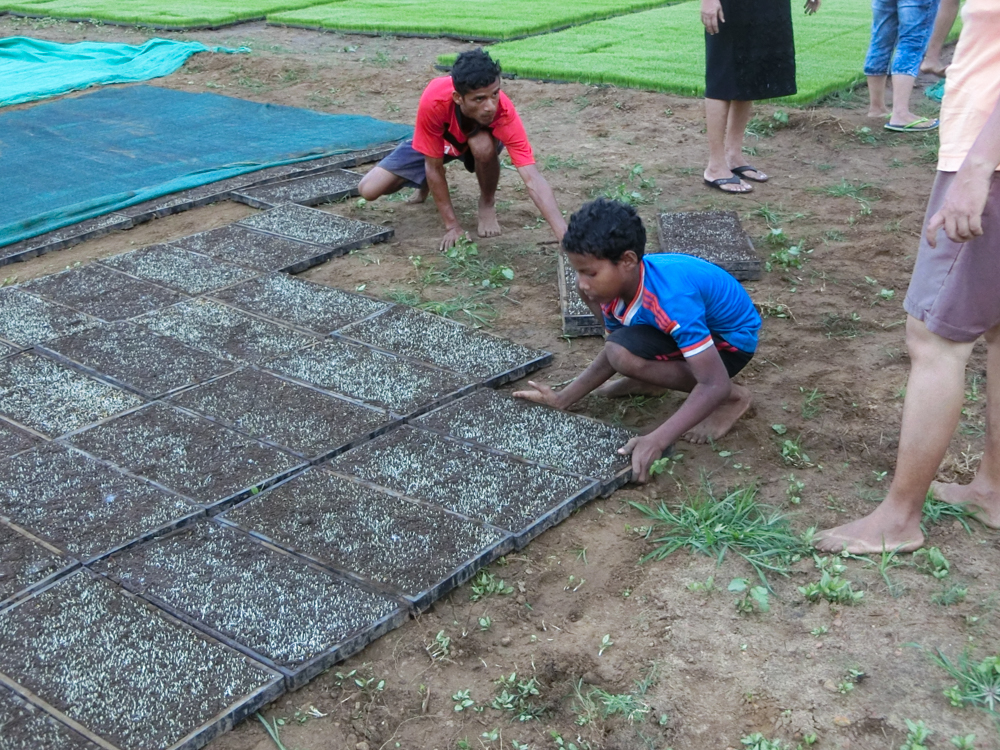
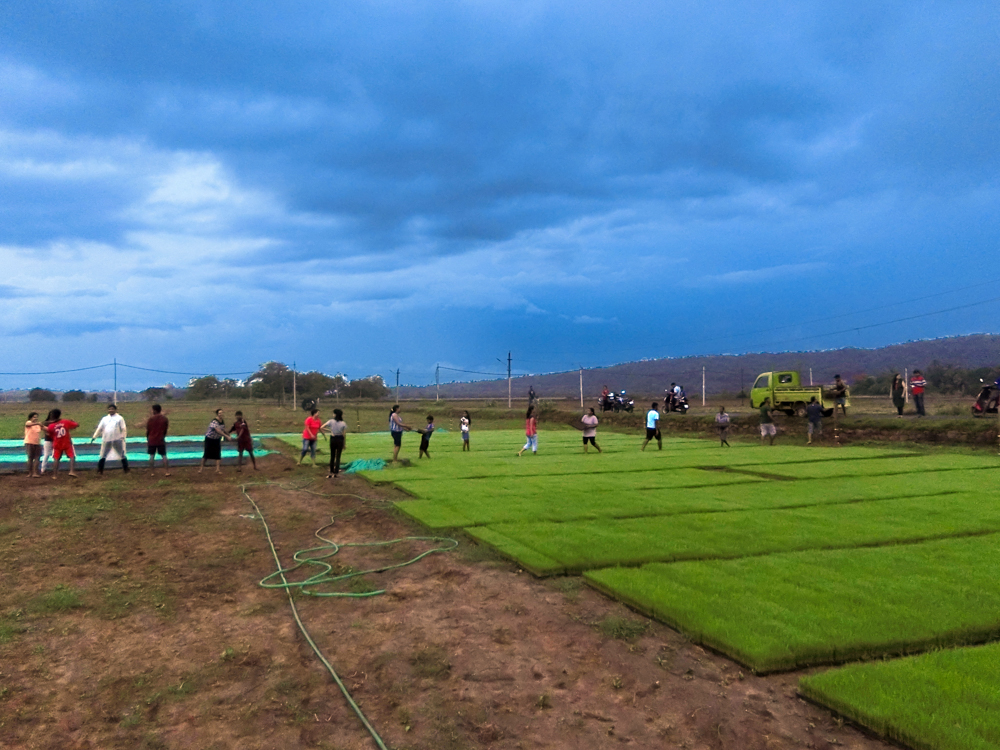
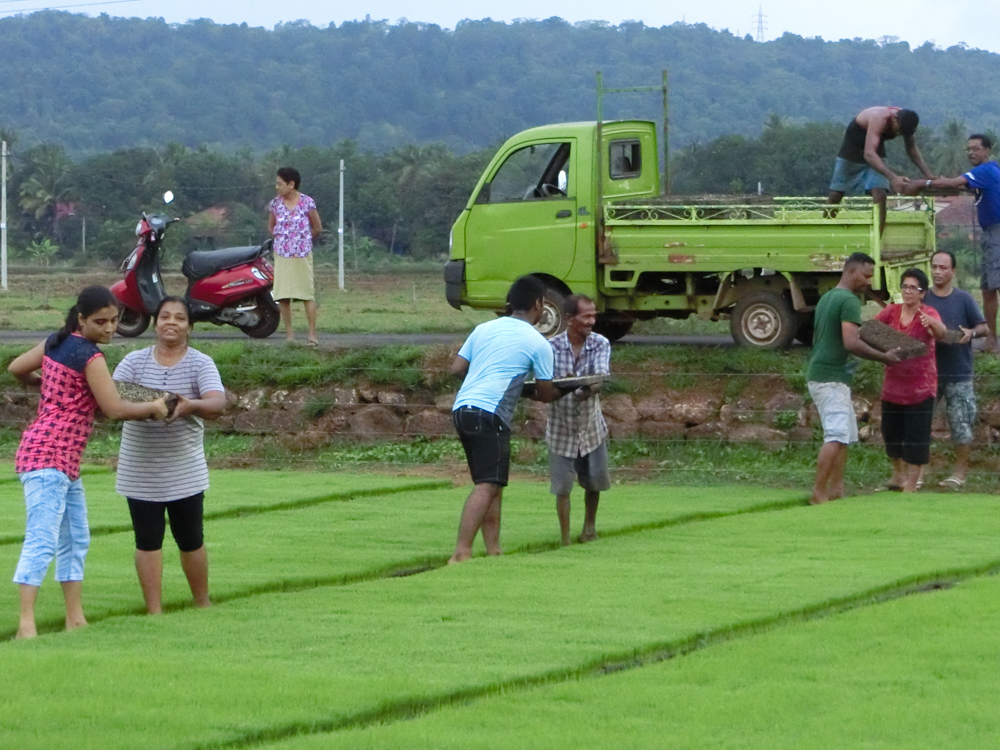
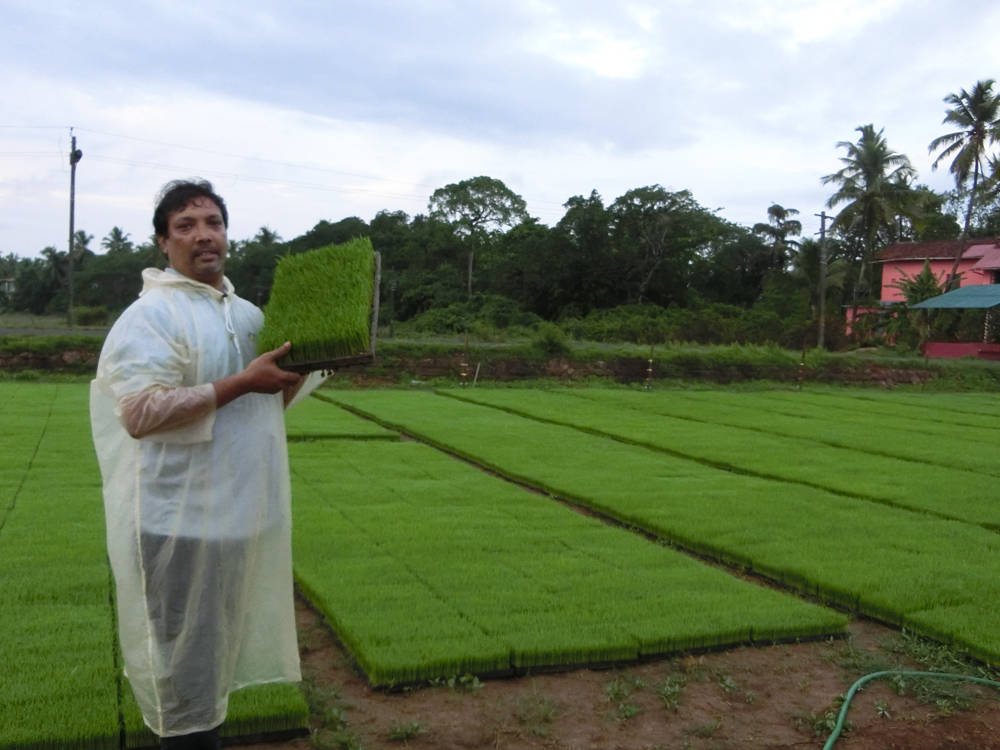
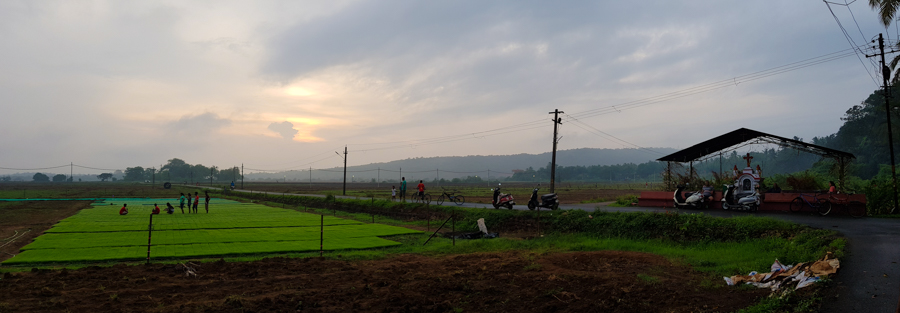
Modern technology
Traditional agricultural equipment like the plough, rake, divolo and hatchet have all made way for new mechanised forms. Ploughing and preparation of the land was carried out by tractors and rotovators, a special machine which churns the soil thoroughly and effectively readies it for sowing.
The planting of seeds also follow a systematic process in ready-made trays which have been supplied by the DBLS. ‘These trays pass through a machine with a conveyor belt which fills different layers in it. First, the mud followed by the seeds and water, followed by another layer of mud’ explains Ashwin Varela, another dedicated Parish Youth volunteer who is ever-present on site. The trays with the supplements are then placed on the fields. Once they are grown to a certain height, they are ready to be transplanted. Owing to its manner of preparation, these layers of mud solidify and can be easily separated from its trays during transplantation.
The transplanters at St.Estevam arrived on 11th June 2018. In a span of few days, Fr. George Quadros and team have already sown a huge number of seedlings, which would have taken days to complete manually. He hardly ever leaves his wheel and works with zeal and passion. Fr. George is slowly training the farmers and volunteers to handle the transplanter so that they can continue the good work even in his absence, which will eventually take the form of community farming after a season or two.
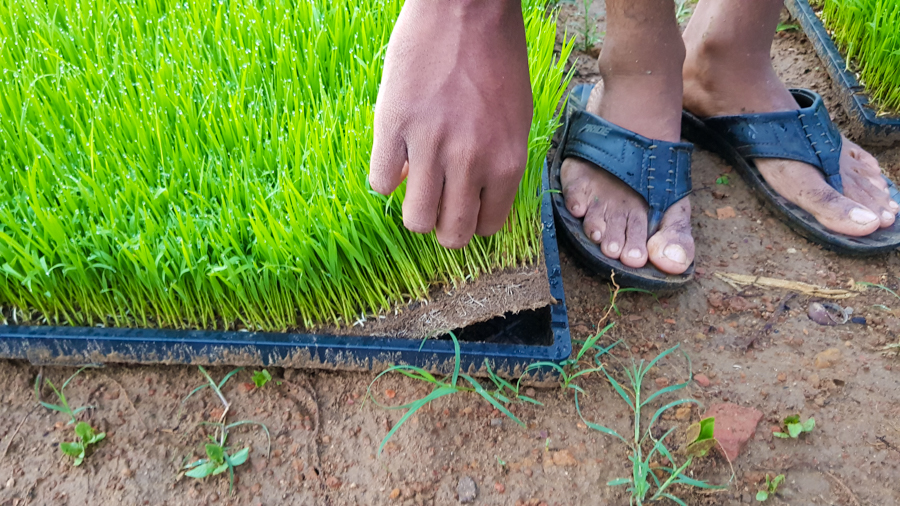
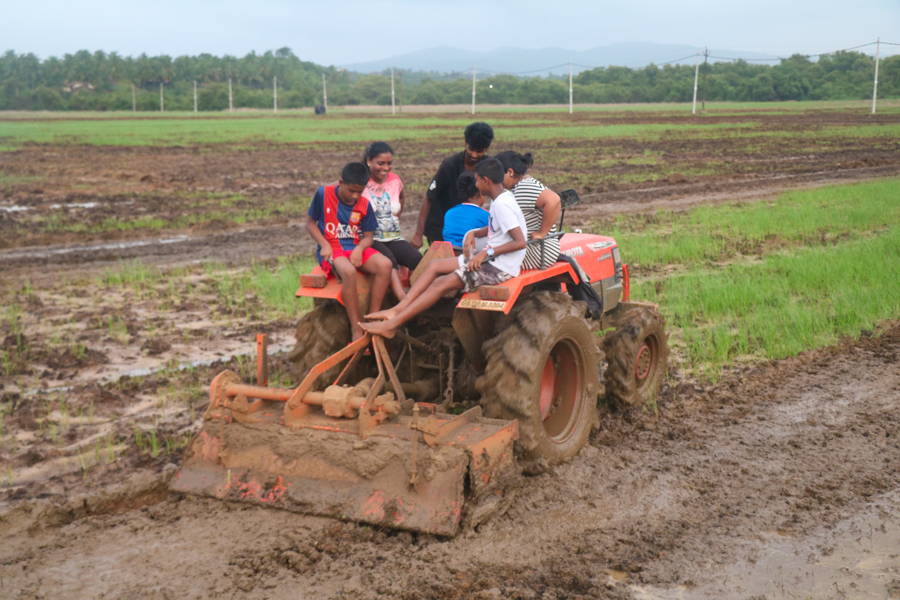
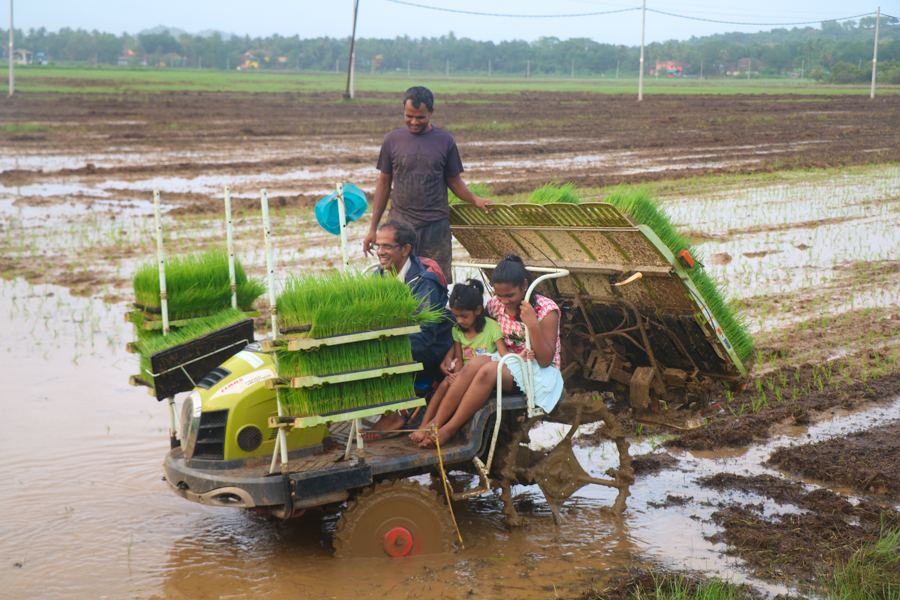
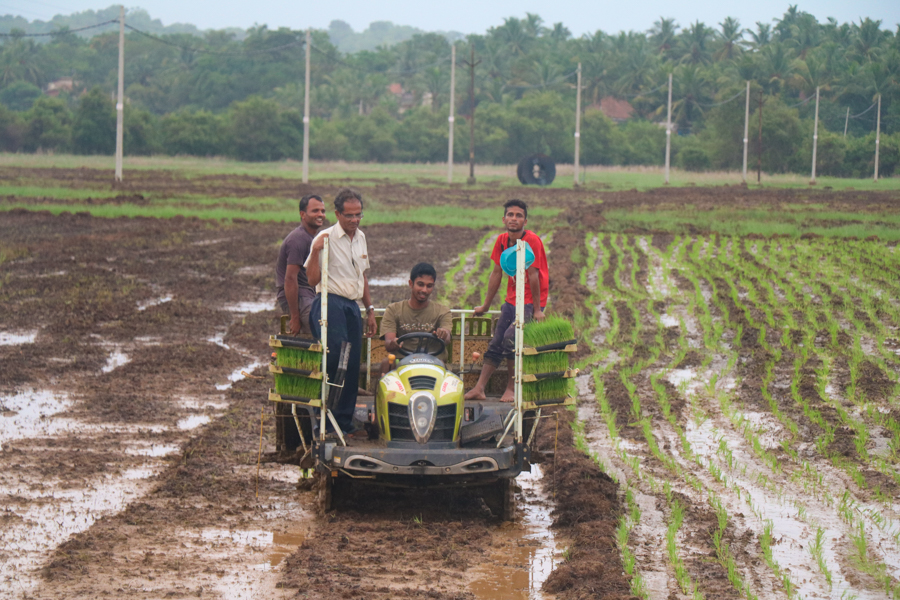
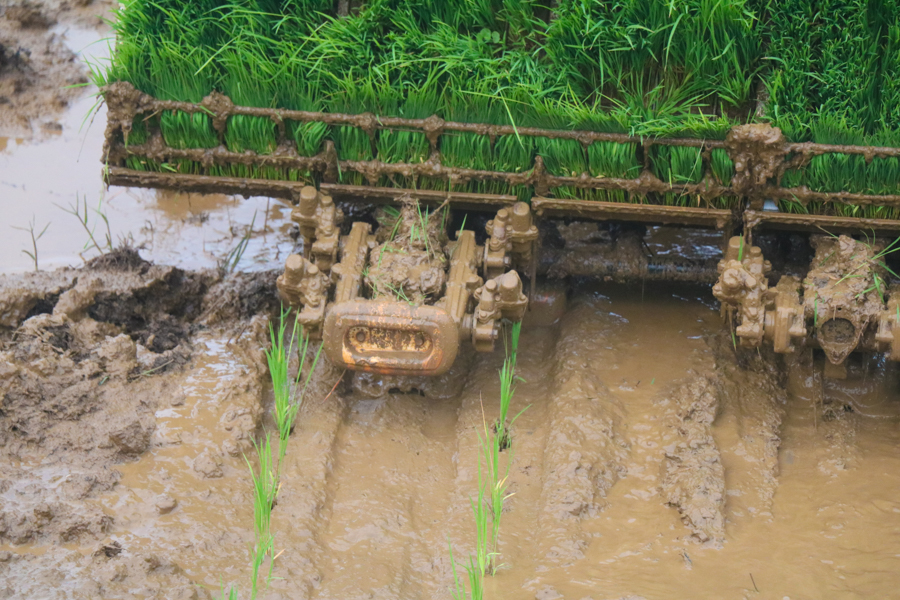
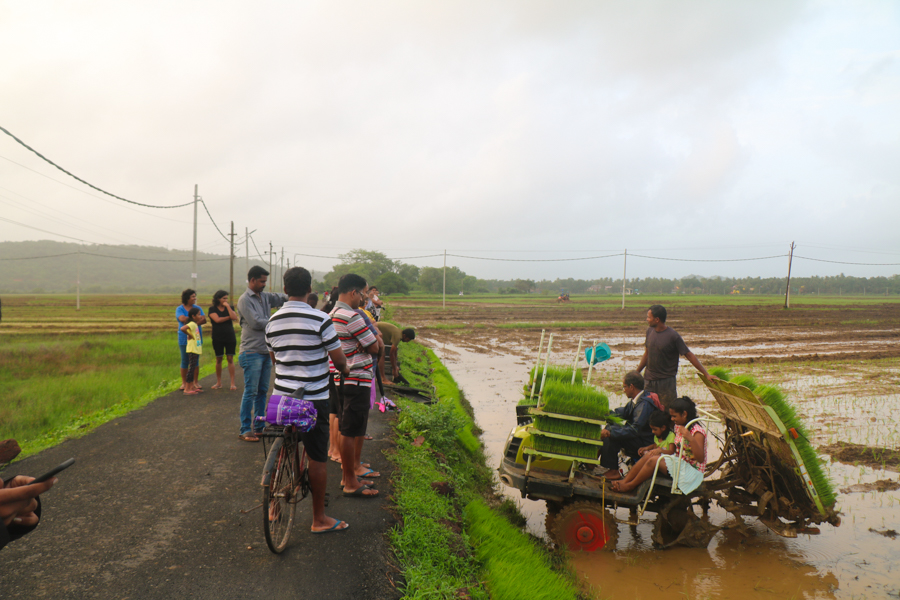
People are now excited for the upcoming kharif season. The signs are good. The Ilha Verde Farmers Club is now targeting 4 lakh sq.m of land for cultivation for a rate of Rs. 3.5 sq.m which the people will pay to the DBLS for execution works and common technology. If all goes well, they are hopeful of carrying it forward into the rabi season as well.
Final thoughts
The works at Jua show that farming is still profitable, contrary to expectation. The technology introduced cuts the time taken to plant immensely, and also works out to be cheaper because of the common infrastructure among the people. Father George says ‘Once this mechanised farming is accepted all over Goa, I can rest’ (The Goan Everyday, 22nd Jan 2017). As is evident from the work so far, he has won over the hearts of the Juenkars. And his endeavours here and in the other villages surely are on course for success.
The happenings at Jua are a testament to the peoples love for their land. It’s quite an amazing sight to see all the villagers come together in spirit and work for a common goal so devotedly. A certain section of the population have not given up their lands for cultivation yet, probably due to the risk involved in such a large scale project. However, seeing the excellent progress made so far, they would surely be tempted to join in the activities next time round. The village is finally green again, and is brimming with excitement.
The khazans, mangroves and waterbodies of Jua are a fragile ecosystem which is facing constant threats of development. Community farming will go a long way in keeping the flora and fauna intact and thus the identity of the village. Lets hope everything goes well and that St. Estevam and its beauty and ancient heritage is preserved for future generations.
